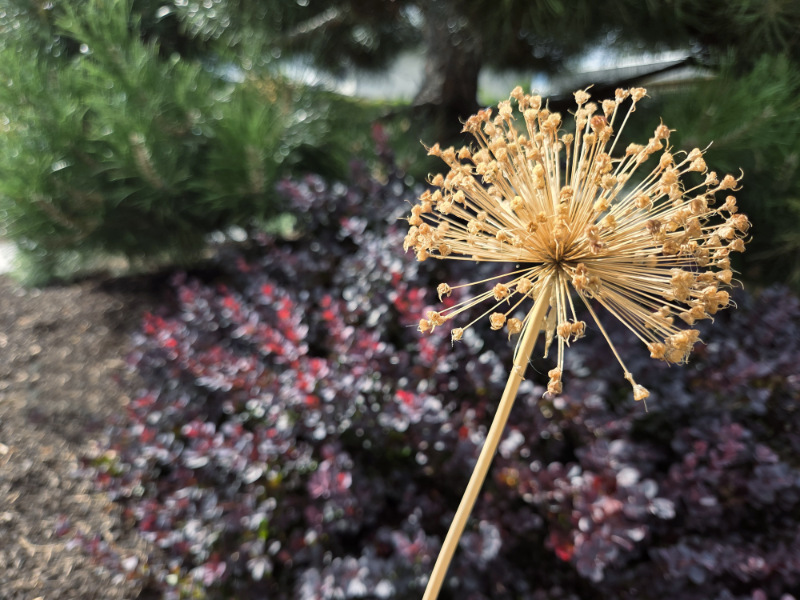GARDENING WITH NATURE
Article by Sigrie Kendrick
Leave Seed Heads for a Winter Garden
In the world of gardening, we often focus on the fleeting glory of flowers with their vibrant colours and sweet fragrances that mark the peak of a plant’s ornamental appeal.
Yet there’s a quieter, more enduring beauty that emerges after the petals fall—one that extends the garden’s visual interest well beyond the traditional growing season.
Magical Seed Heads
The seed heads of xeric plants offer architectural interest, providing structure, texture, and movement that can transform a fading landscape from dormant to dynamic.
Among the most spectacular examples is Pulsatilla, commonly known as pasque flower or prairie crocus.
After its silky, bell-shaped blooms fade in early spring, this hardy perennial produces seed heads that are nothing short of magical. Each seed develops a long, feathery plume that catches light and moves with the slightest breeze, creating an ethereal display that can last for months.
These silvery, gossamer structures rise above the plant’s finely divided foliage like wisps of smoke. In late afternoon light, a patch of Pulsatilla seed heads becomes luminous, transforming an ordinary garden corner into something special.
The ornamental value of these seed heads extends beyond their immediate beauty. They provide crucial interest during the lean dormant months when many gardens lack structure.
While other perennials retreat underground or become mere stubble or sticks, Pulsatilla’s seed heads create focal points that draw the eye. They’re particularly effective when planted in drifts, where their collective movement creates a sense of flow that animates the garden even on still days.
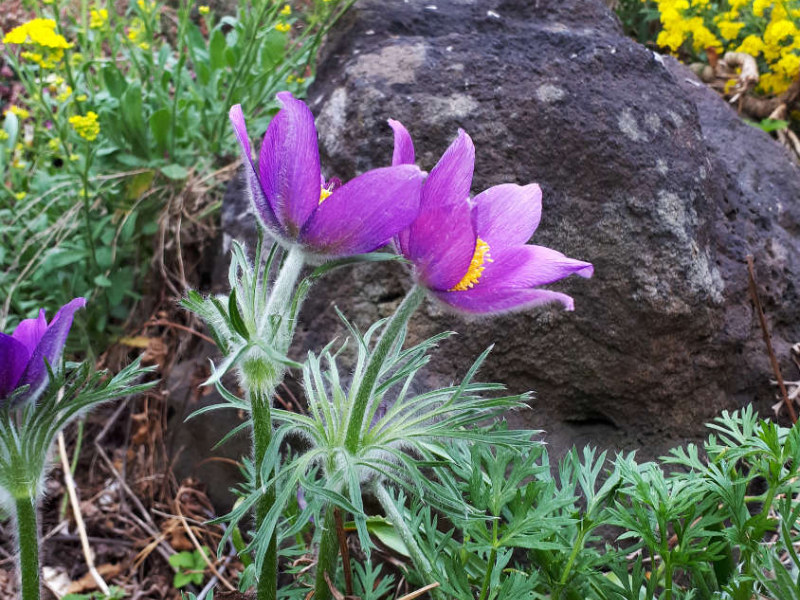
Pulsatilla blooming in the spring
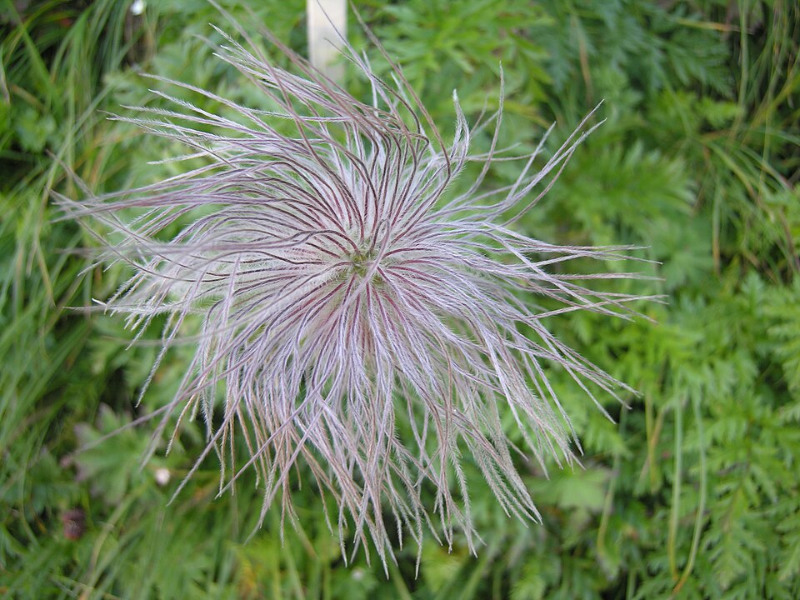
Pulsatilla seedhead left to add interest to the garden
Seed Heads Making a Bold Statement
Achillea millefolium, or yarrow, offers a completely different but equally compelling seed head display. Where Pulsatilla whispers, yarrow makes a bold statement. The flat-topped flower clusters that were a magnet for pollinators in summer persist into fall as architectural bronze medallions, their geometric precision providing strong horizontal lines that contrast beautifully with grasses and other vertical elements. These sturdy seed heads maintain their form through snow and ice, offering reliable structure when the garden needs it most. The ornamental impact of yarrow seed heads is enhanced by their incredible diversity. Different cultivars produce seed heads in varying sizes and colours, from the large, rust-coloured platters of “Gold Plate” to the smaller, more delicate structures of “New Vintage Red”. This variety of form allows gardeners to create layered compositions where seed heads of different scales and hues interact and evolve as light and weather conditions change throughout the dormant season. Native, wild yarrow flowers, once dead and dried, make attractive shapes in a winter garden, or in dried-flower winter bouquets.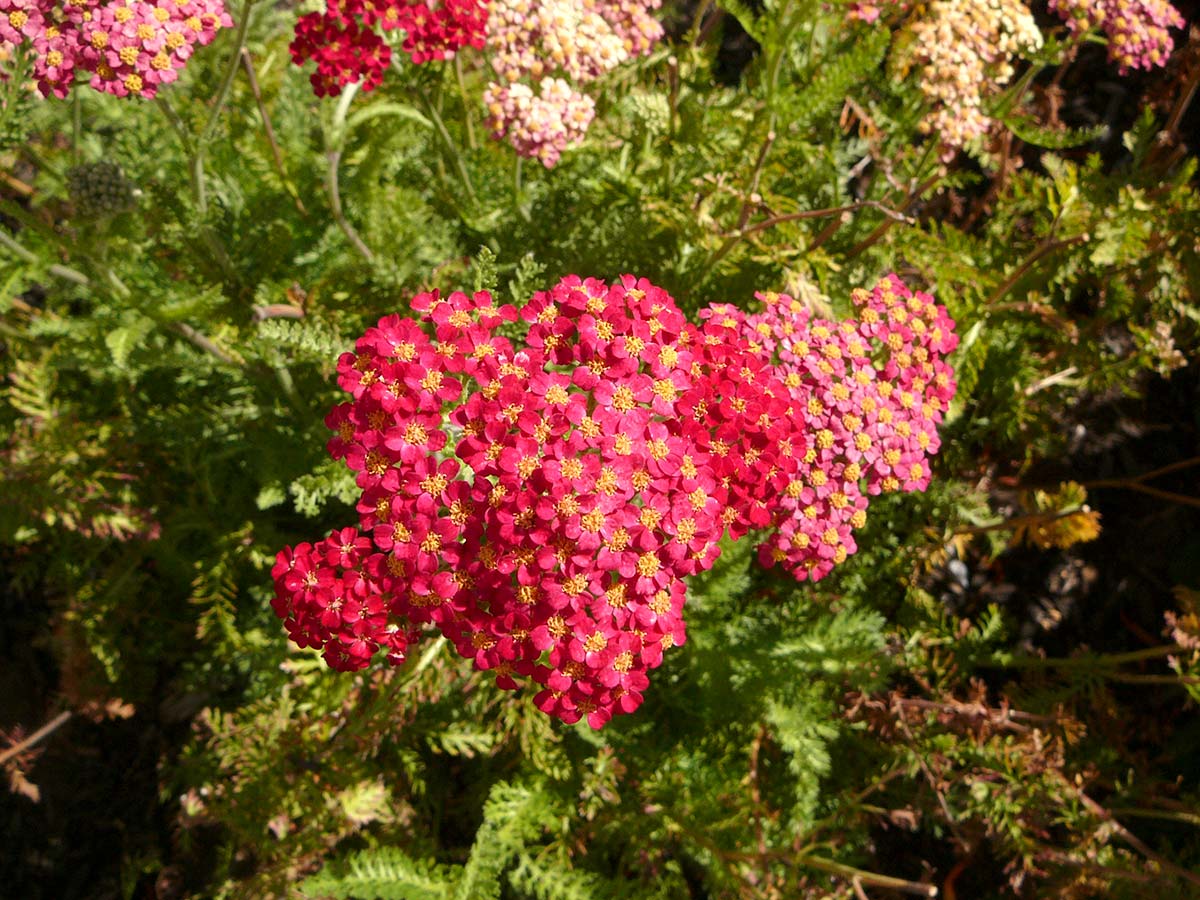
Achillea millefolium blooming in the summer
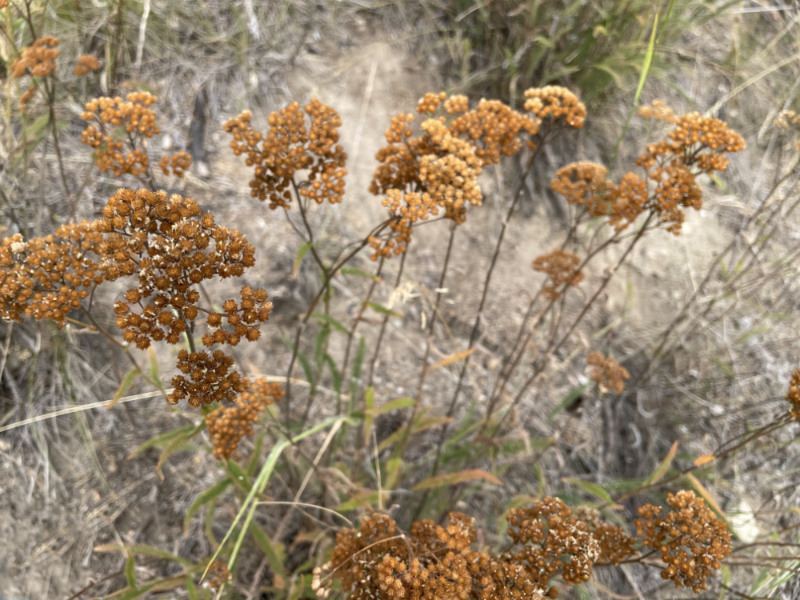
Achillea millefolium seedheads in a winter garden
The Drama of Allium Seed Heads
Perhaps most stunning of these seed heads come from the many cultivars found in the Allium family. These spherical seed heads can range in size from a loonie up to the huge Allium “Globemaster”, which sports 8-10 inch flower heads. Allium seed heads possess a striking architectural beauty that transforms gardens long after their colourful blooms have faded. These structures, ranging from delicate silvery orbs to bold bronze globes, depending on the variety, create dramatic focal points with their perfect geometric forms perched atop slender, sturdy stems. The papery bracts that once enclosed the flowers now split open to reveal intricate star-shaped patterns, each segment radiating outward. Their sculptural quality is particularly captivating when backlit by morning or evening sun, which illuminates their translucent surfaces and casts delicate shadows. Whether left standing in autumn borders where they provide textural contrast against dying foliage, or cut for dried arrangements where their enduring form adds structure, Allium seed heads demonstrate nature’s ability to create lasting beauty with simplicity.
A variety of Allium blooming in the spring
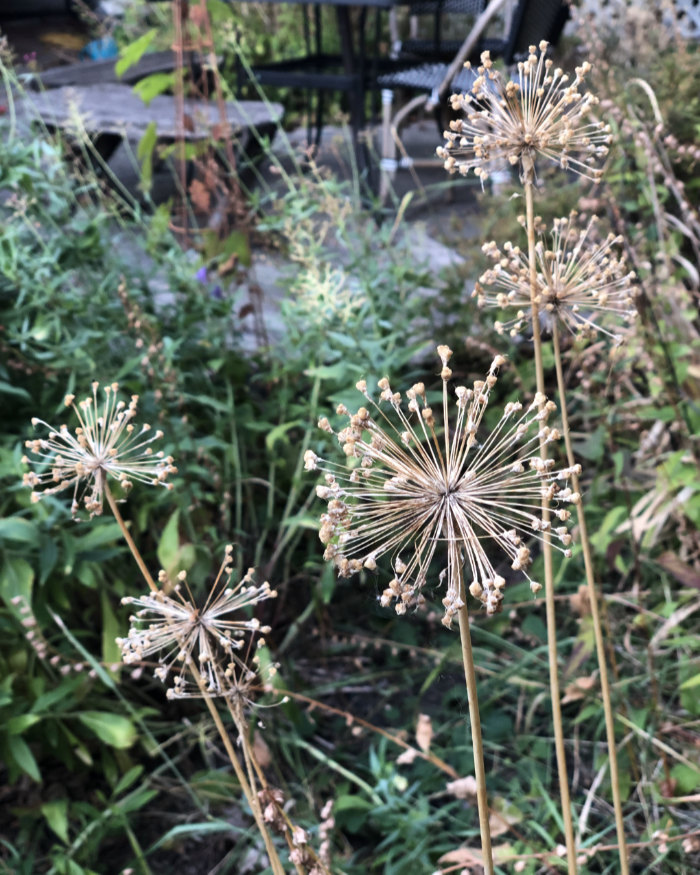
Globe allium seedheads in a fall garden
Sigrie Kendrick is a master gardener and executive-director of the non-profit Okanagan Xeriscape Association.
Our Plant Database features more than 500 plants tested and ideally suited for the unique challenges of gardening in the Okanagan’s extreme climate, iincluding the plants in this article.

